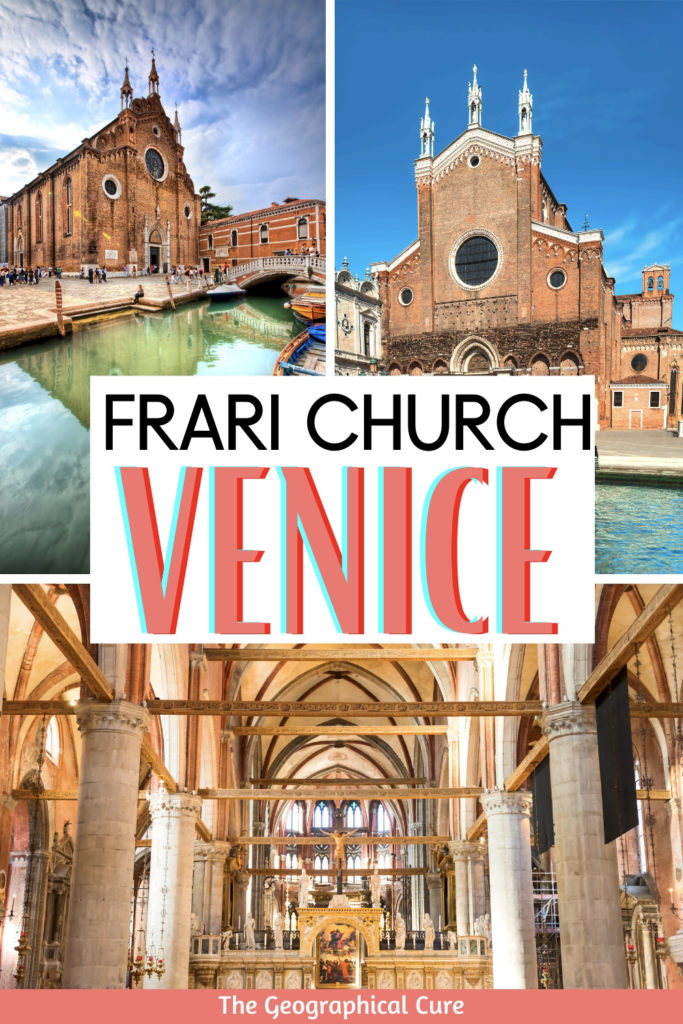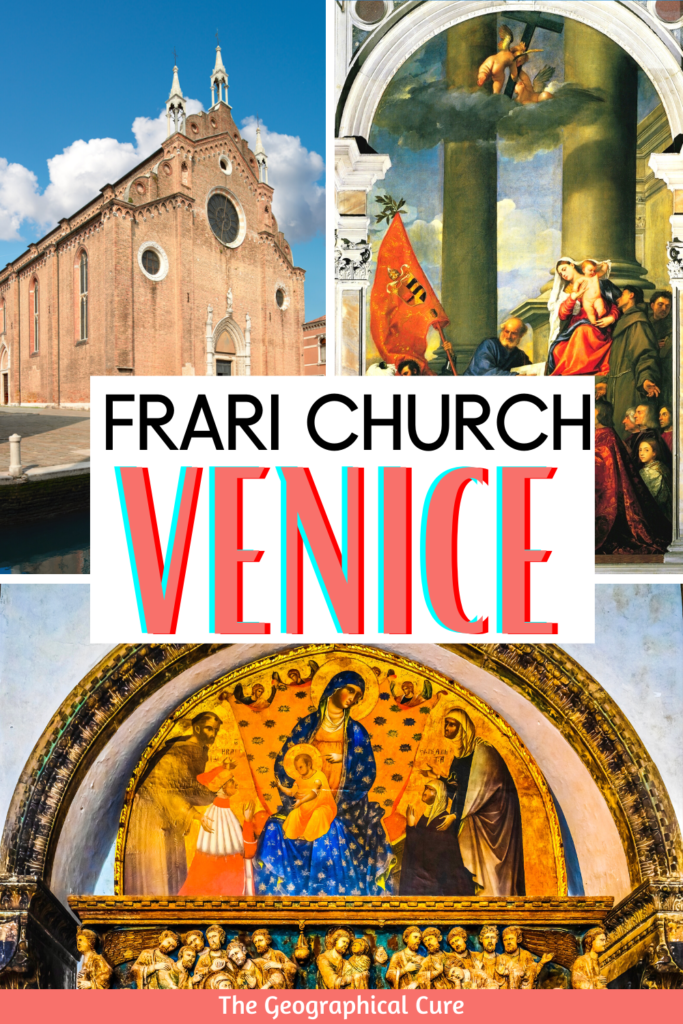Here’s my guide to visiting the Basilica of Sant Maria Glorioso dei Frari in Venice Italy, simply known as the “Frari.”
I give you an overview of the basilica’s history and tell you what to see inside. The Frari is a mini museum of Venetian Renaissance art and one of the city’s greatest artistic storehouses. Its main claim to fame are two stunning Titian masterpieces.
The Frari is one of Venice’s most famous churches and landmarks. It’s located in the San Polo district.
READ: 2 Days In Venice Itinerary
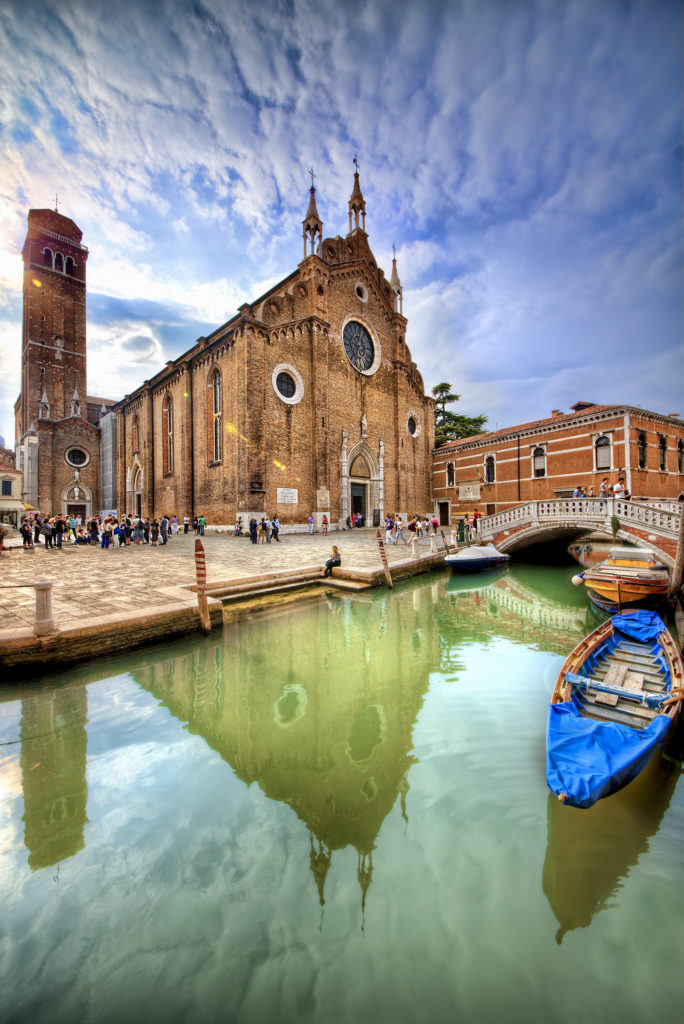
The Frari is immense. It’s the second largest and most illustrious church in Venice after St. Mark’s Basilica. The Frari is one of the few Gothic churches in Venice.
Inside, you’ll find important masterpieces by Titian and Bellini. There are also ornate tombs of famous Venetians, including monuments to Titian and the sculptor Antonio Canova.
By far the most important thing to see at the Frari are the two Titian paintings. If you’re an art lover, it’s worth visiting the Frari just to see these works.
The best thing about the Frari is that its art works are in situ. This means that you can see the art in its original setting, where they were seen by viewers in the late 16th century.
>>> Click here to book a ticket
History Of The Frari Church
The Frari was built by the Franciscan order. They came to Venice in 1226 after the death of the order’s founder, St. Francis of Assisi.
St. Francis was part of a reform movement in the 1200s, which reacted against the decadence and corruption of the Roman Catholic Church. Francis was an ascetic monk who dressed in rags.
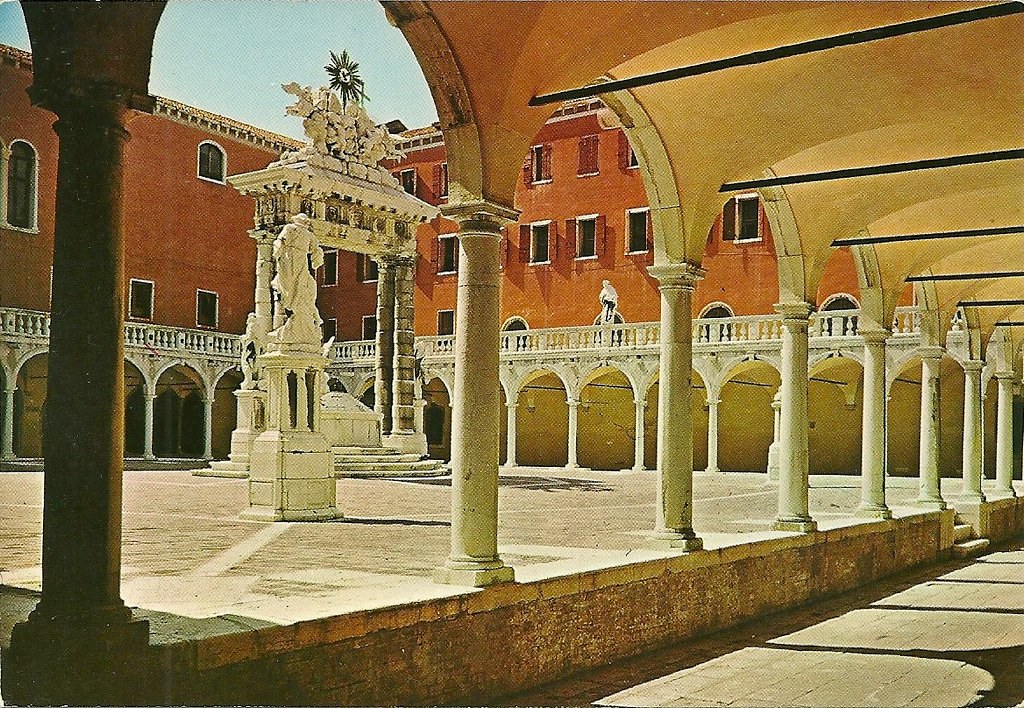
St. Francis dedicated his life to poverty, humility, simplicity, and anti-materialism. Francis espoused a philosophy in which the Earth and all living creatures were respected as God’s creation, not viewed as inherently sinful.
READ: Guide To The Basilica of St. Francis of Assisi In Italy
Francis’ humanistic spirit inspired Renaissance painters to capture the beauty of the physical world and human emotions.
In the 15th century, the Frari was thoroughly remodeled in the Gothic style and chapels were added. In the 20th century, the church was extensively restored by Save Venice.
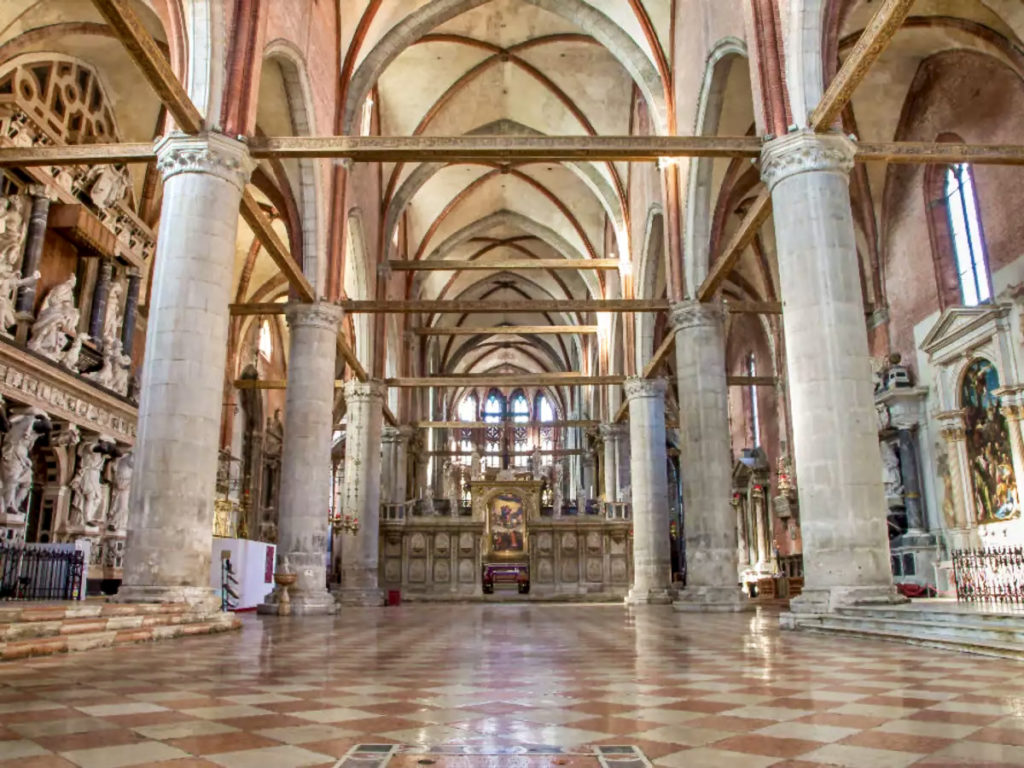
Guide To The Frari Church: What To See
The Frari Church is a treasure chest of beautiful art, which takes you on a mini tour of the history of Italian art. Here are the most important things that you can’t miss in the Frari Church:
1. Rare Wooden Choir And Rood Screen
You enter the Frari and proceed down a vast nave. There are 12 columns down each side, with gilded arches.
An intricately carved rood screen sits in front of the choir and high altar. Rood screens were a common feature in late medieval church architecture. The purpose was to separate the clergy from the laity.
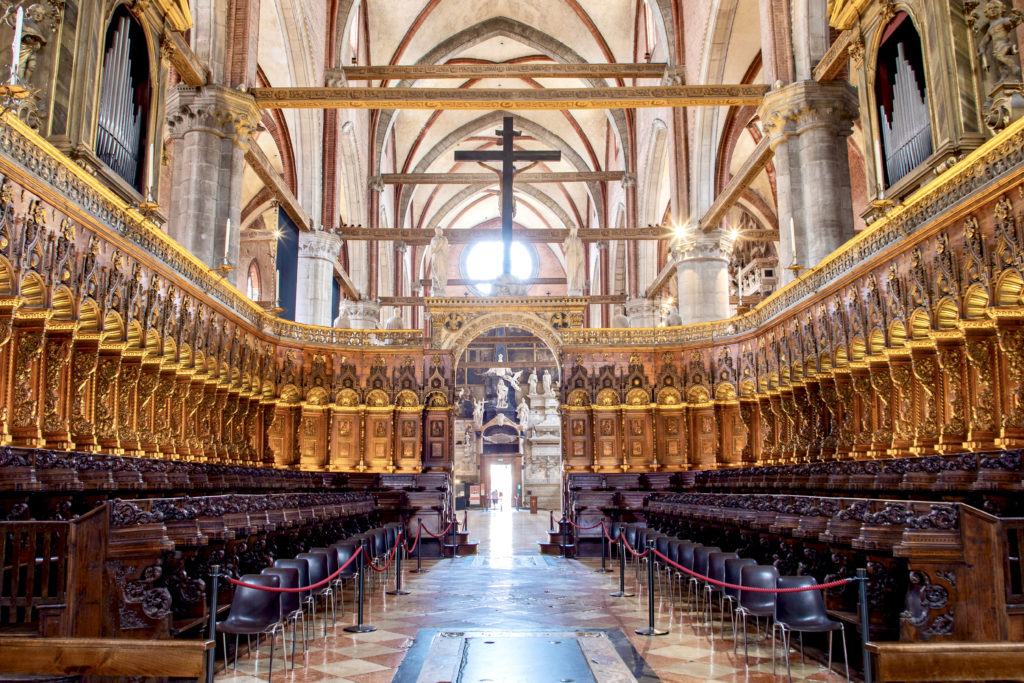
Beyond the rood screen is the elaborate choir, carved by Francesco and Marco Cozzi.
It’s the only extant wooden choir in Venice. This structure allowed friars to hold smaller and more intimate services. There are functioning historical organs on either side.
The fine carved wooden inlay above the choir chairs shows the Renaissance enthusiasm for Florentine-style 3D.
Surviving choirs and roods screens are very rare today. During the Counter-Reformation, Luther discarded them in order to get priests closer to their parishioners.
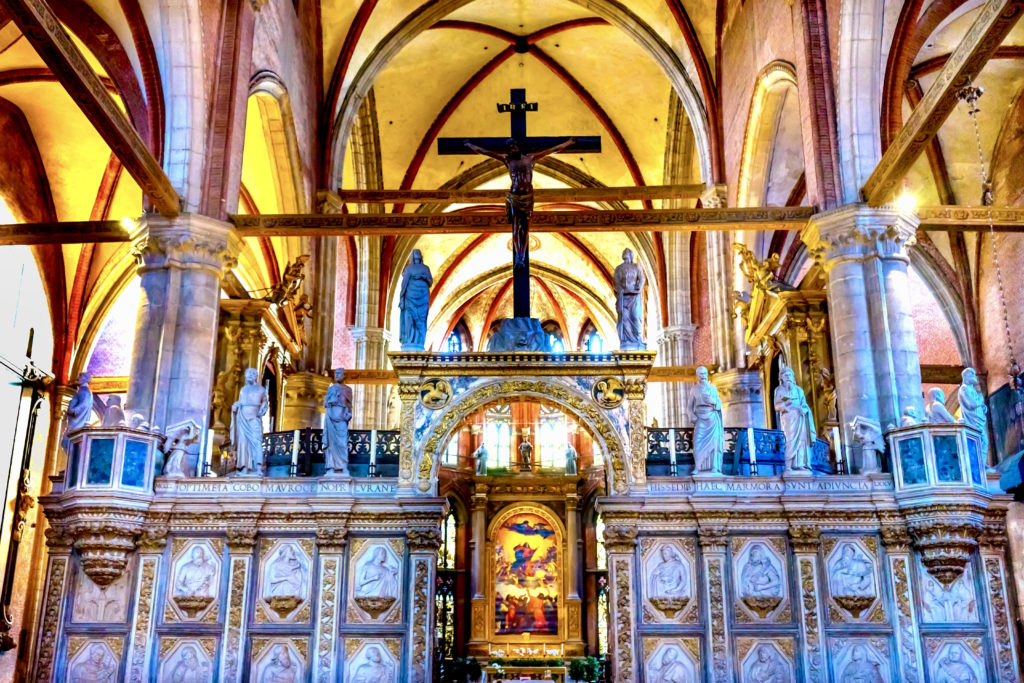
2. Titian Masterpieces
Titian is widely considered the most important painter of the 16th century Venetian school. He’s known for his sensual use of color and compositional innovations.
The two Titian masterpieces in the Frari are the Assumption of the Virgin and the Pesaro Altarpiece.
Assumption of the Virgin
This is the most important painting in the Frari and it’s in the chancel. A semi-circular opening in the rood screen allows you to peak at Titan’s masterpiece as you walk down the nave.
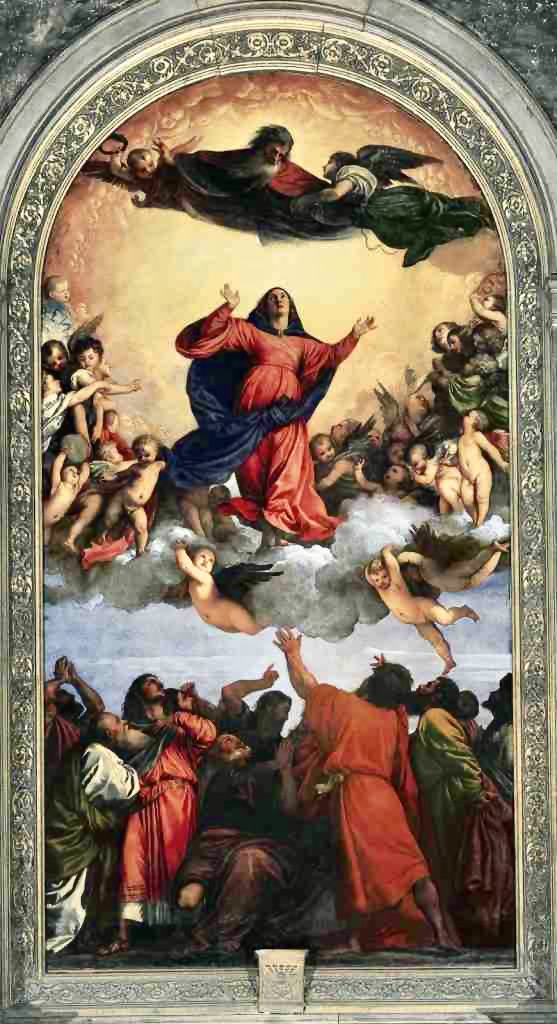
The Assumption is a massive painting, 20 x 11 feet, and Titian’s first public work. He was only in his late 20s when he executed it. The Assumption established him as the foremost painter in Venice.
The Assumption story is based on the belief that Mary didn’t die, but just fell into a divine sleep. She’s awoken by God and her body is pulled into heaven.
Normally, in Renaissance-era assumptions, you see a empty sarcophagus with Mary hovering above. For example, this is how she was depicted in Perugino’s (now destroyed) fresco in the Sistine Chapel in Vatican City.
In contrast to static early Renaissance works, Titian’s piece is a drama-filled scene that’s expressive and dynamic. It’s a wonder of light and color.
Raphael’s famous 1520 Transfiguration in the Vatican Picacoteca is heavily influenced by it. In turn, Titian may have been influenced by Raphael’s Sistine Madonna from 1512.
READ: Guide To Raphael’s Famous Paintings
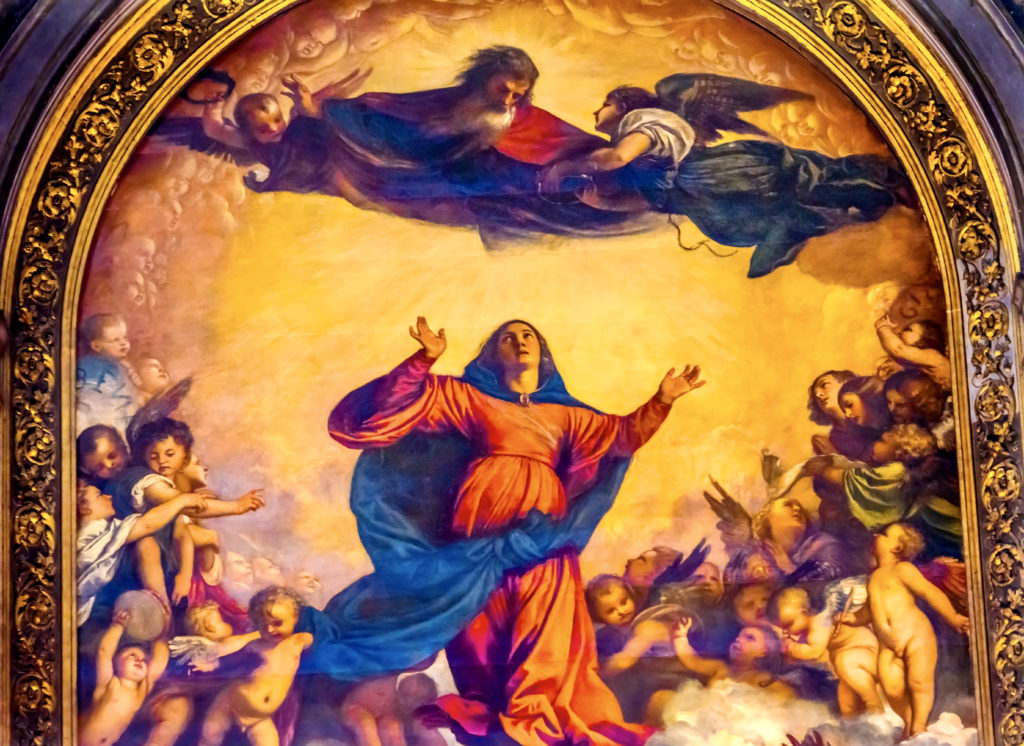
The painting is divided into two levels. The apostles are on the lower level, gathered around a tomb, gazing up at Mary as she is assumed.
On the upper level, you see a radiant Mary in a cloud-filled sky supported by angels. Mary looks a tad sensual. The drapery of her cloths is blowing in the wind.
When the Assumption was unveiled, it was thought to be rather indecorous. The friars were confounded. But were persuaded to keep it.
The Assumption was recently restored by Save Venice.
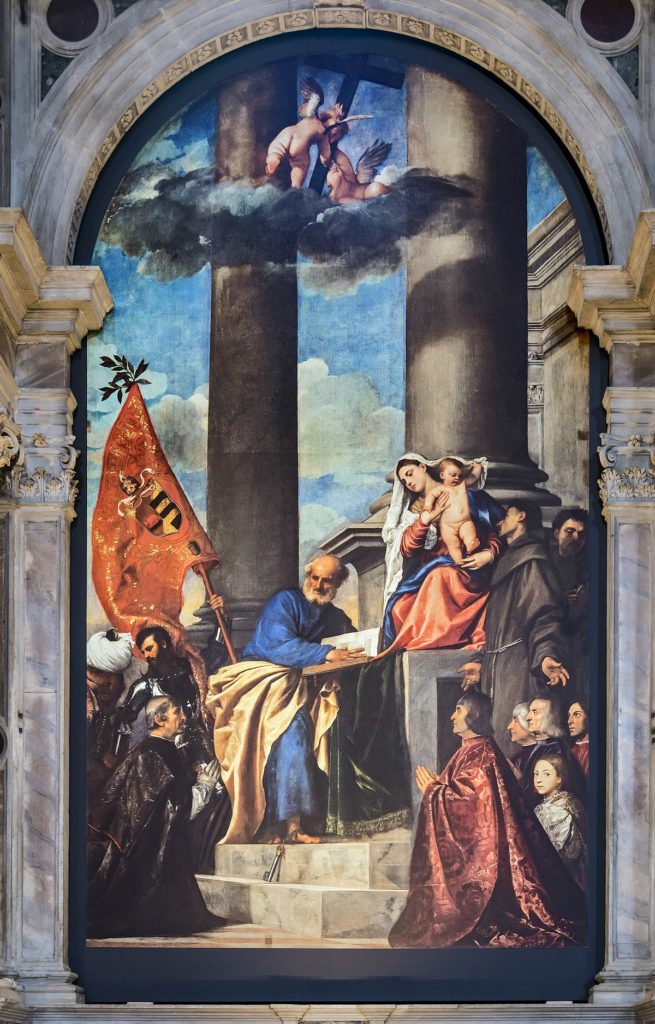
Pesaro Altarpiece
Unveiled in 1518, Titian’s Pesaro Altarpiece depicts Mary with Christ and the saints. It’s the center of a marble altar attached to a wall in the left aisle.
The piece was commissioned by one of Venice’s most prestigious citizens, Jacopo Pesaro. And it’s found in the family’s Pesaro Chapel.
You can see Pesaro kneeling before Mary, who is placed daringly off-center. Titian’s wife posed as Mary, but then shortly after died in childbirth.
Behind him is a figure of a knight holding the Papal and Pesaro coat of arms. They represent Pesaro’s military victory over the Turks.
St. Peter is depicted in a toga with white hair and a beard. You know it’s him because his “keys to the kingdom” dangle.
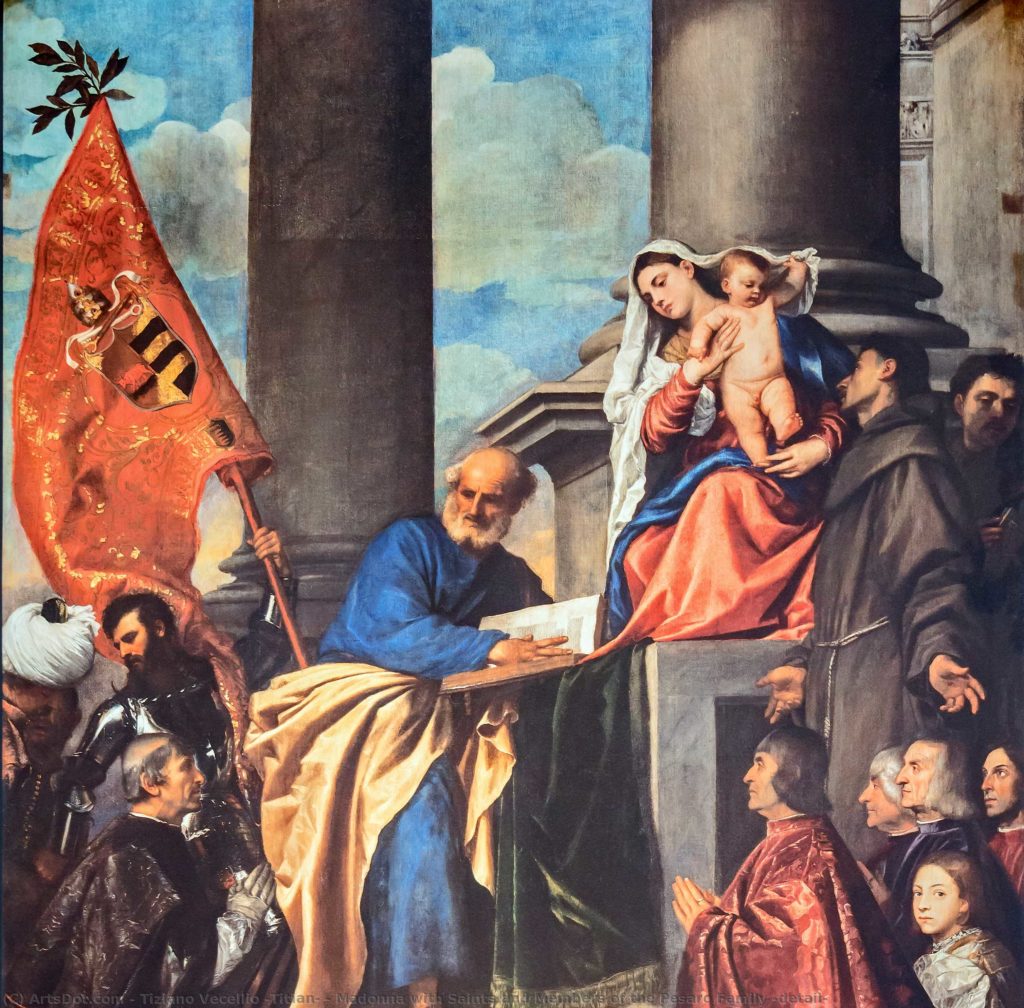
On the other side is St. Francis of Assisi, shown in his brown habit. He appears to be presenting members of the Pesaro family to Mary for her blessing.
The whole scene is set a classical setting, with monolithic columns suggesting Olympia above.
Titian’s altarpiece scandalized a Venice used to more subdued church art. The rich colors and twisting poses seemed bold. Most striking, Mary is fully human, not a stiff icon on a throne.
Only after the Holy Roman Emperor offered to buy the altarpiece did the church agree to pay Titian.
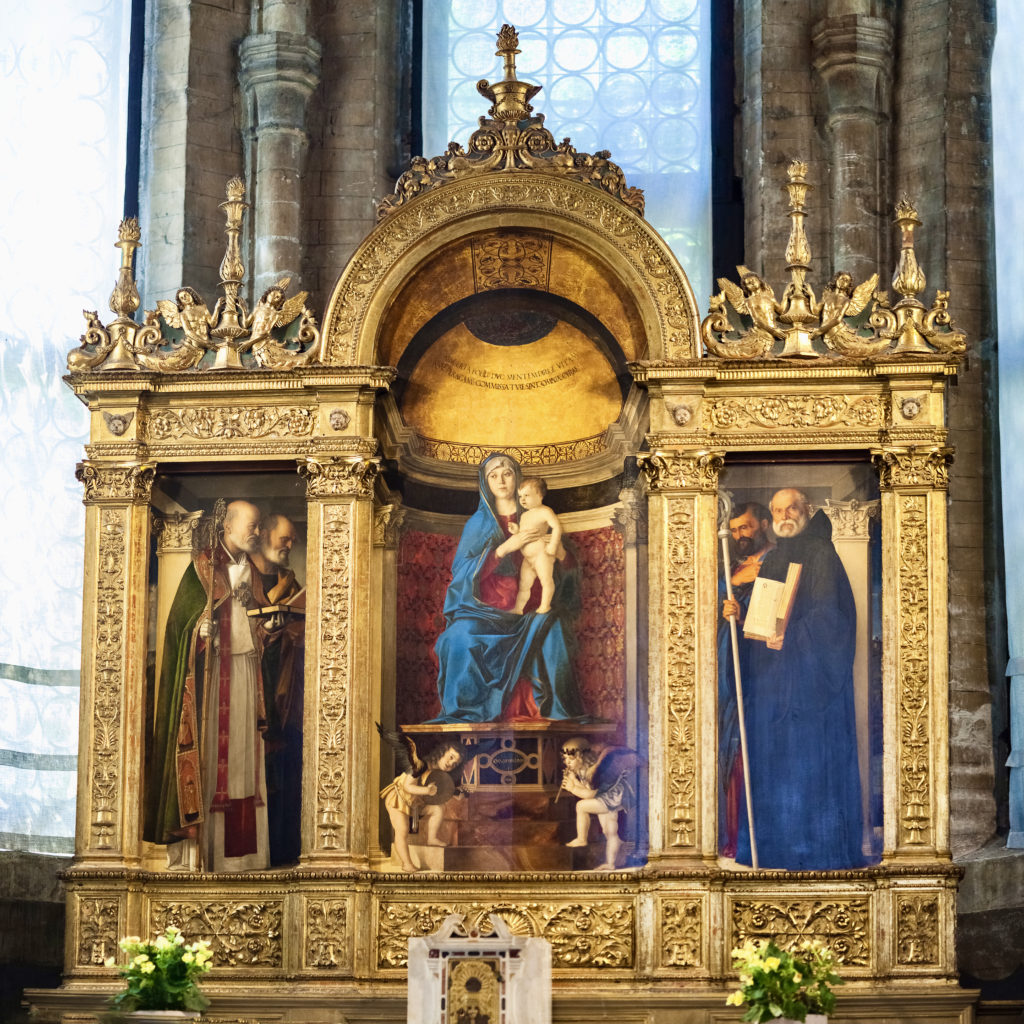
3. Bellini Masterpiece
Bellini was the first great Venetian painter. The Frari’s famous Bellini masterpiece is his Madonna and Child with St. Nicholas of Bari, Peter, Mark, and Benedict. It’s known as the Frari Triptych. It hangs over the wall in the sacristy of the Pesaro Chapel.
The piece is one of the seminal works of Early Renaissance painting. Henry James once said it “seemed painted with molten gems.”
The painting is a beautiful symmetrical arrangement of the Virgin Mary and the Christ child under a golden barrel vault. The perspective is perfect.
On a throne holding the Christ child, Mary looks tender and achingly sweet. The child raises his hand in a blessing.
Winged angels play musical instruments, a flute and a lute. Mary is flanked by saints.
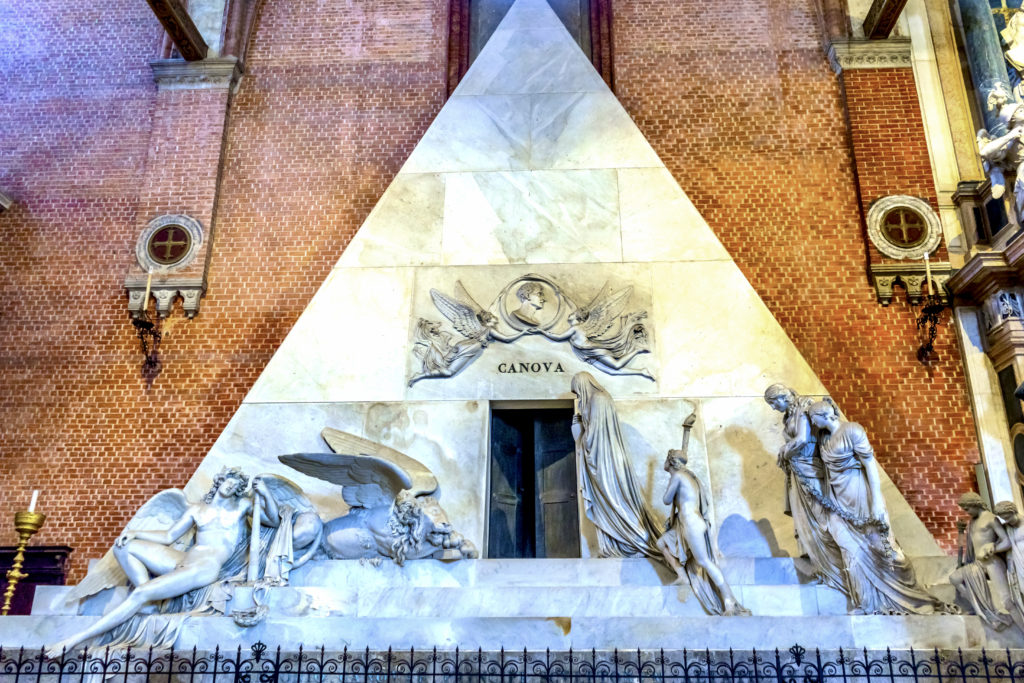
4. Canova Pyramid Monument
Antonio Canova was a great Neo-Classical sculptor. This monument was designed by Canova himself and carried out by his students five years after his death.
Canova was a mason. The pyramid was intentionally chosen because it’s a symbol of the Great Architect of the Universe, the supreme god of the freemasons.
On the left, an angel opens her wings. She is the custodian of the soul passed into the sky.
A sleeping winged lion holds a closed book. This is the symbol of the artist’s wisdom.
The cloaked figure represents death. A young man holds a lit torch symbolizing immortality. He is followed by the figures of Hope and Charity.
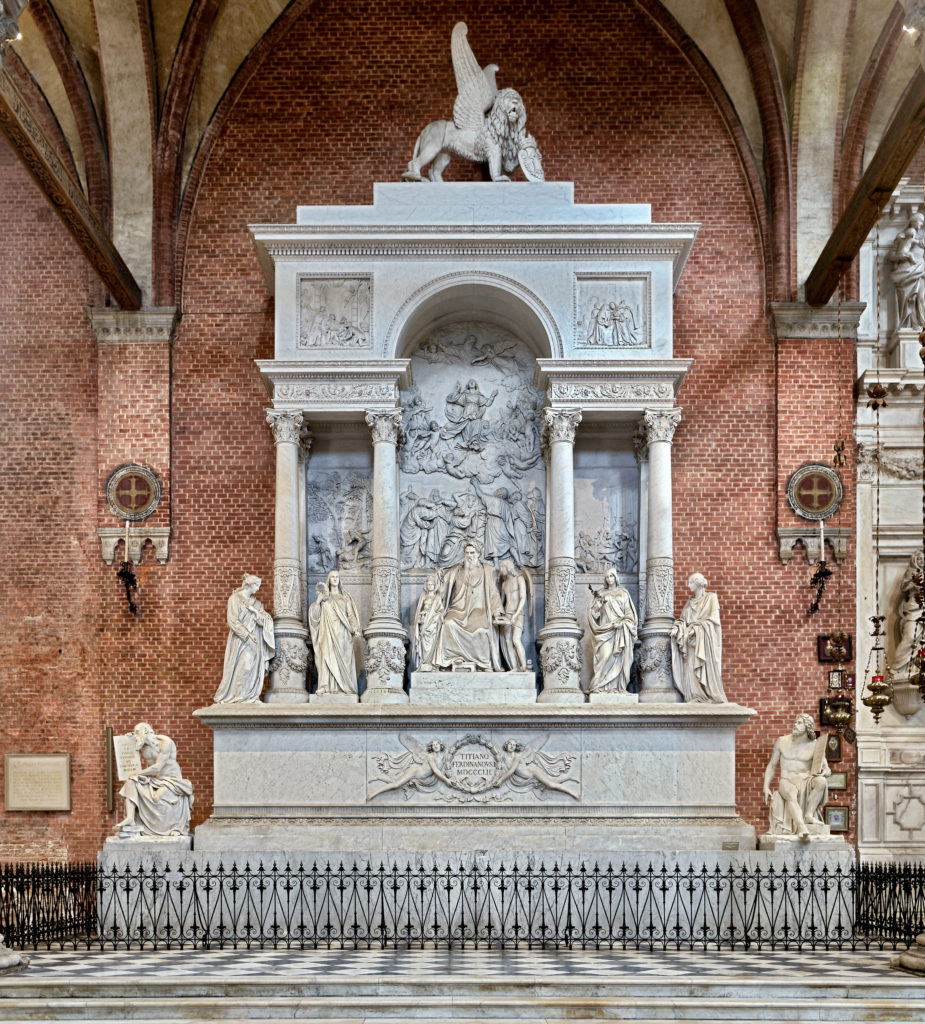
5. Titian Monument
You can pay homage to Titian in the Frari. On the right aisle of the nave is his tomb. Titan died in 1576 of the plague in Venice.
It was commissioned by Austrian Emperor Ferdinand I in 1838 and carved by Luigi and Pietro Zandomeneghi between 1843 and 1852.
Because it was completed under Austrian rule, the rather bombastic monument features the Lion of Saint Mark clutching the Habsburg coat of arms.
The monument is made of Carrera marble. In the center is a statue of the artist crowned with a laurel wreath, surrounded by the four allegories of art.
There are five bas reliefs depicting Titian’s most important paintings.
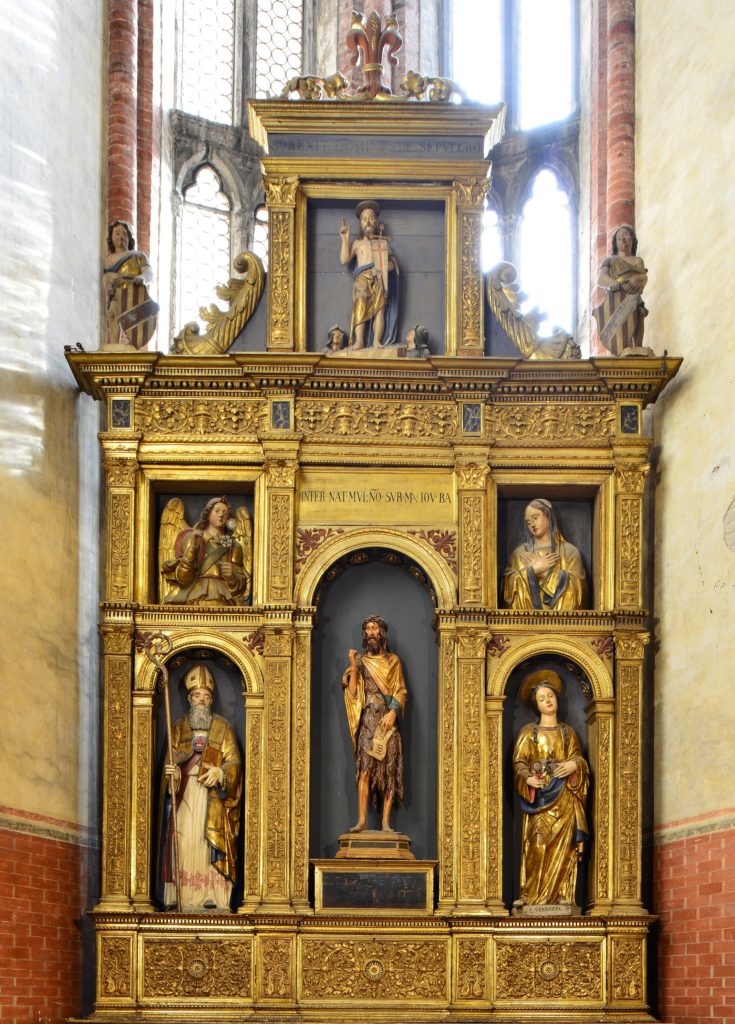
6. Donatello Sculpture In Chapel Of St. John The Baptist
The Frari’s St. John the Baptist Chapel has the only Donatello sculpture in Venice. Donatello was a hugely influential Florentine artist who essentially invented Renaissance sculpture. He had a profound effect on Michelangelo and later generations of Renaissance artists.
Donatello was the first sculptor to move away from Gothic depictions. He re-introduced elements from the classical Greco-Roman sculpture, which he had studied in Rome.
Donatello departed from the prevailing flat iconography. He sought to depict the human experience, producing natural and highly emotional works. With Donatello, life seems to burst out of marble and bronze.
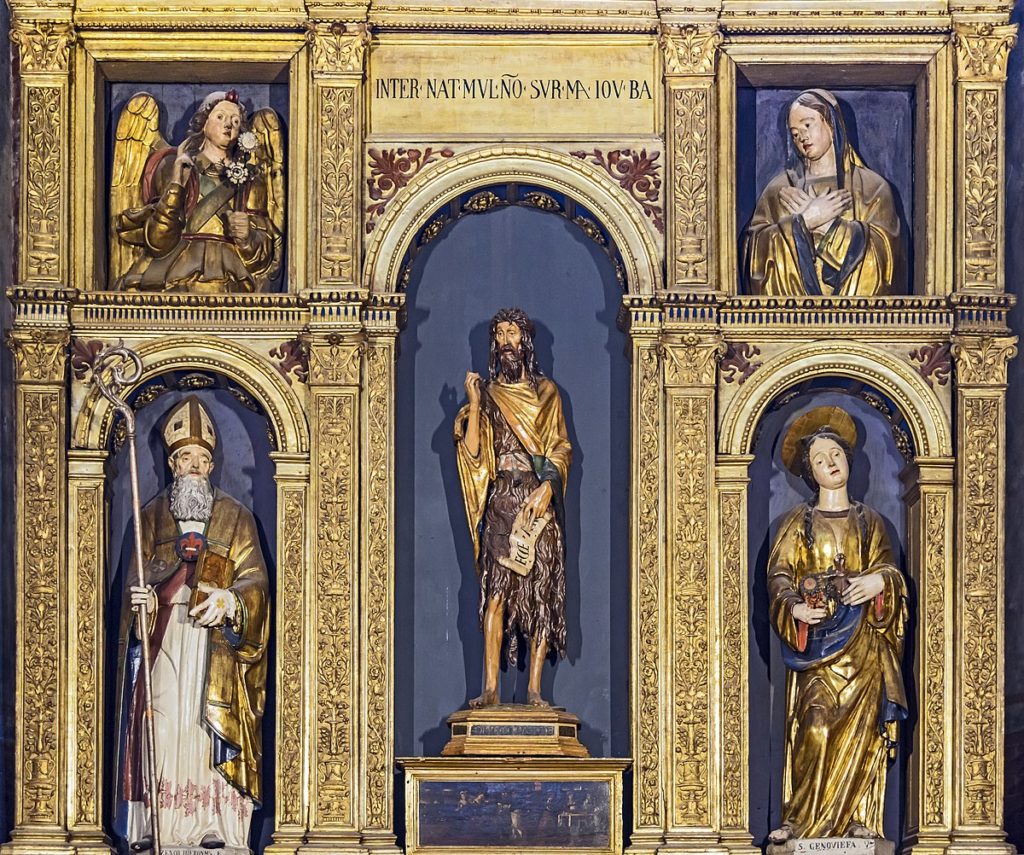
READ: Guide To The Masterpieces Of Donatello
For this chapel, Donatello created a polychromed wooden sculpture of St. John the Baptist, which sits in a niche in the center of the altar. It was possibly commissioned by Cosimo de Medici and given to Venice to thank the city for hosting the Medici family during their exile from Florence.
READ: History of the Medici Family
It’s an animated rendering. St. John is dressed in his typical shaggy animal pelt. He holds a scroll in his left hand while his right hand is raised.
The sculpture is reminiscent of Donatello’s landmark sculpture of Mary Magdalene in the Duomo Museum in Florence.
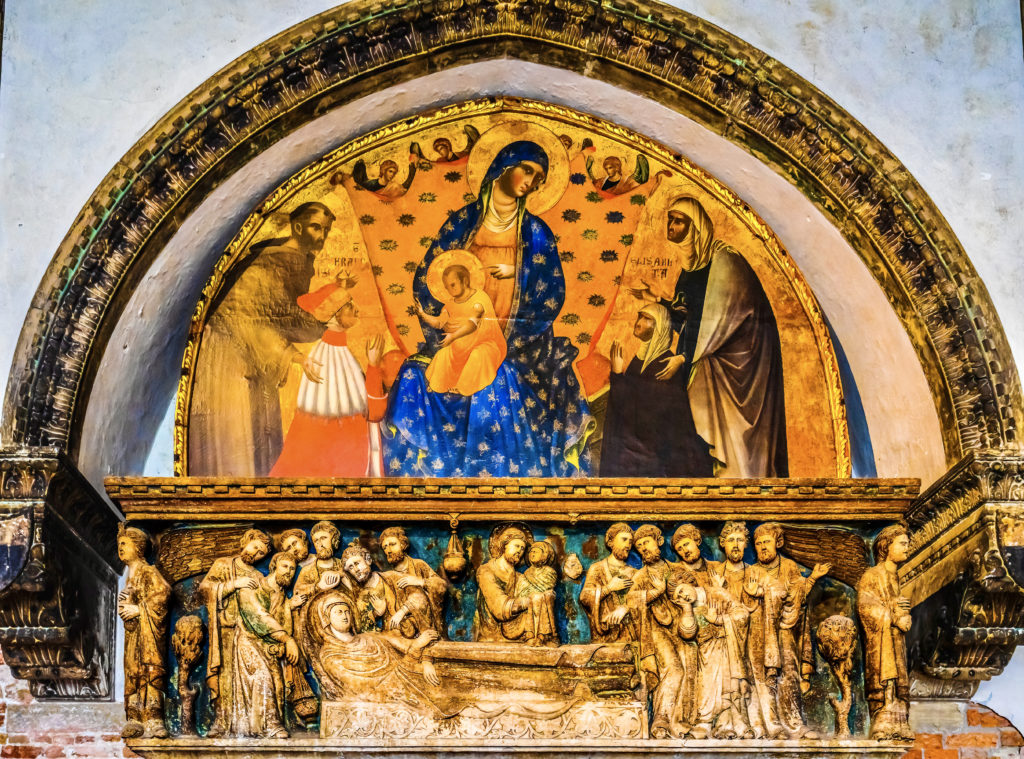
7. Paolo Venezia Painting
In a lunette of an arch you’ll find a beautiful and colorful painting by Paolo Venezia. The artist was the most important Venetian painter in the second and third quarter of the 14th century. This is one of his few remaining in situ works.
St. Francis presents the doge and his wife to Mary.
This isn’t a Renaissance painting. It dates from the International Gothic or Bryzatine era of the 14th century.
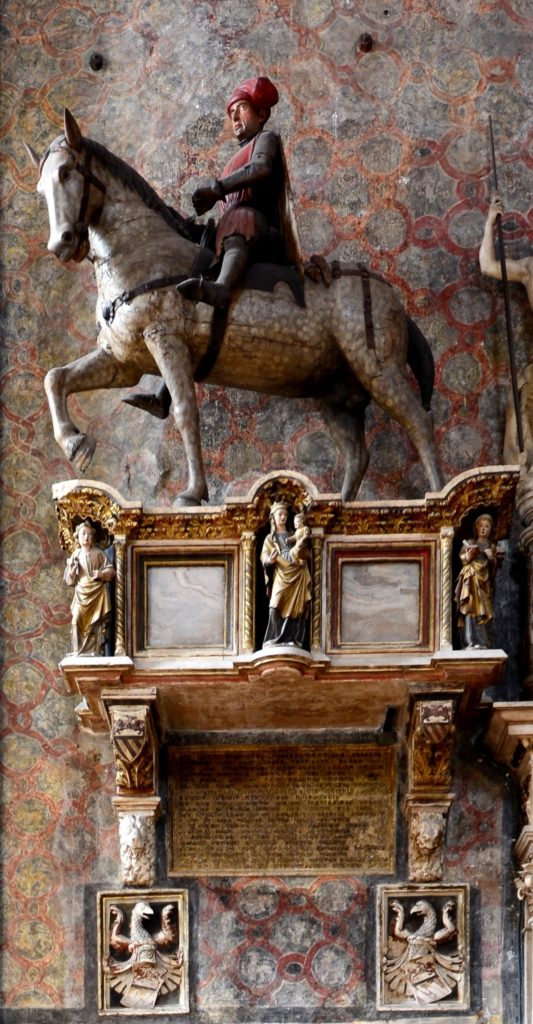
7. Paolo Savelli Equestrian Monument
This elegant monument was the first of its kind in Venice. It’s a freestanding equestrian monument made of carved polychromed wood.
Paolo Savelli was a Roman prince who became commander of Venice’s troops. He died on the plague in 1405. Savelli is shown on horseback, with a velvet cloak and red hat.
Savelli has an animated, almost stern, look. One hand holds the horse’s reins and the other holds a command baton.
The sculptor of the piece is unknown. But it’s generally attributed to the school of Dalle Masenga.
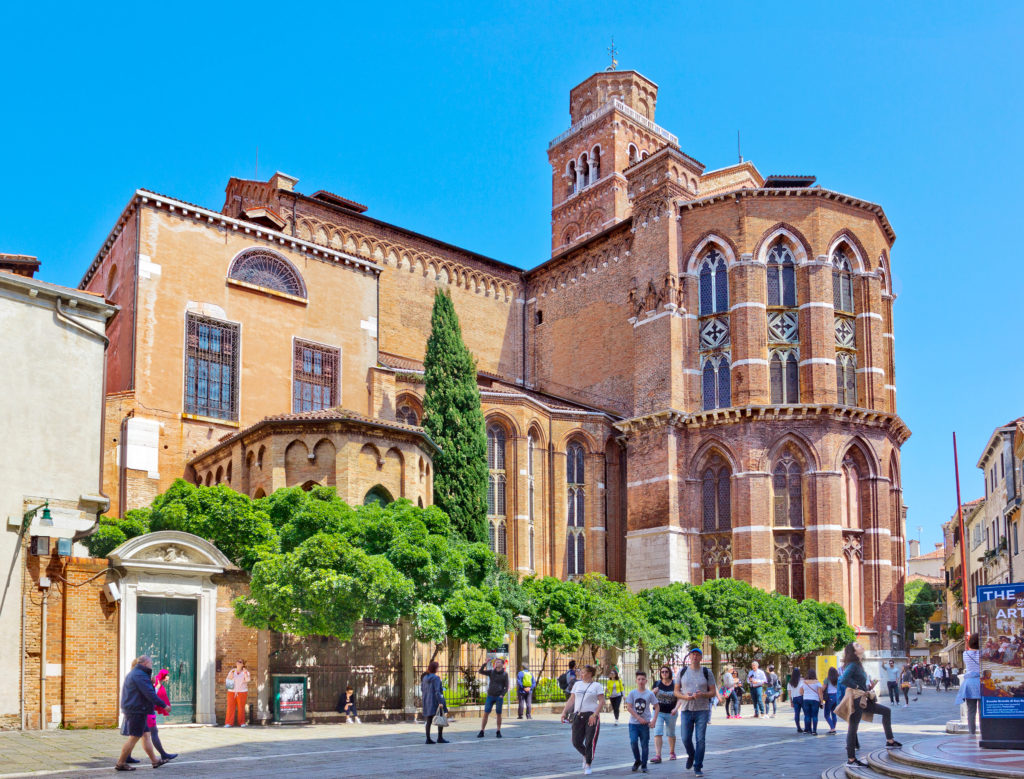
Practical Information & Tips for Visiting the Frari Church
Address: San Polo, 3072, 30125 Venezia. The church is a 25 minute walk from St Mark’s Square. The Vaporetto stop is San Toma.
Hours: Monday through Saturday 9:00 am to 6:00 pm. Last admission is at 5:30 pm. Sunday 1:00 pm to 6:00 pm.
Entry Fee: 3 euros. You can also purchase a 30 minute audio guide for an additional 2 euros.
Tours: Want a bit more guidance? You can book a guided walking tour of San Polo and the Frari. You can also book a guided art and architecture tour.
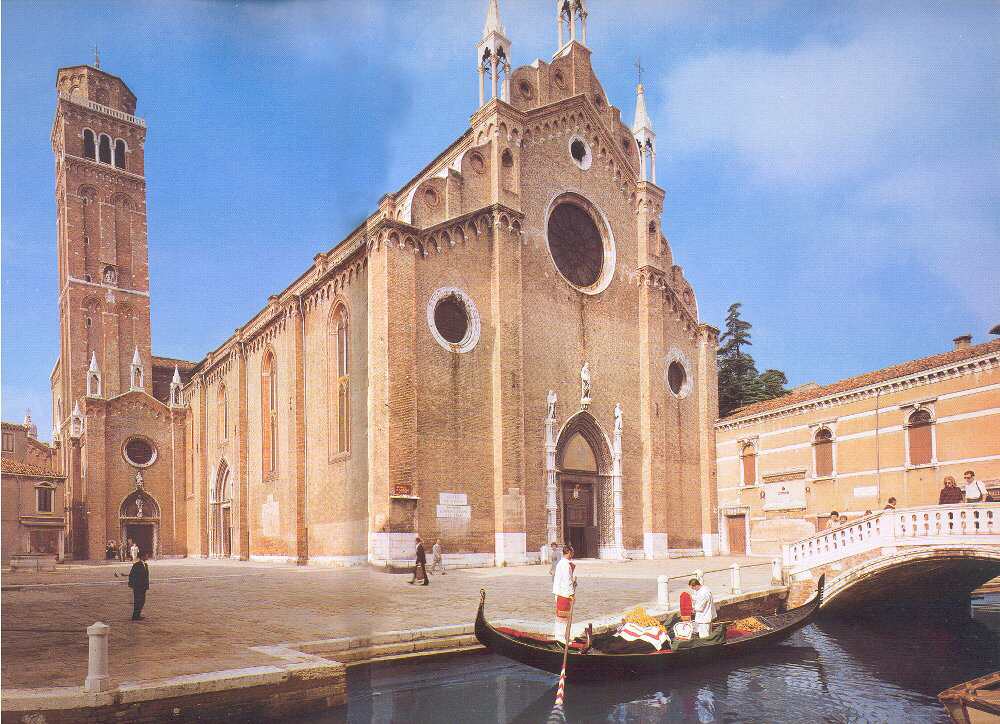
Pro Tips:
The Frari will be a much better visiting experience than St. Mark’s Basilica. It’s more of a hidden gem in Venice and vastly less crowded.
You can take photos inside the church, but not with a flash. The Frari also hosts concerts. Click here to see the concert schedule.
When you’re done take a stroll through the Frari gardens.
The Frari is also very close to the Scuola Grande di San Rocco, with more Titian masterpieces to see.
I hope you’ve enjoyed my guide to the Frari Church in Venice. You may enjoy these other Venice travel guides and resources:
- 1 day in Venice itinerary
- 2 day itinerary for Venice
- Top Attractions on the Grand Canal
- History of Venice in a nutshell
- Guide to the Peggy Guggenheim Museum
- Guide to the Accademia Gallery
- Guide to Padua’s Scrovegni Chapel
- 7 day itinerary Venice to Milan
- Guide to the mosaics of Ravenna
If you’d like to visit the Frari Church in Venice, pin it for later.

